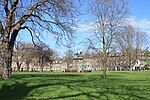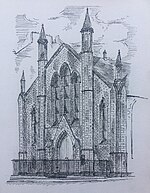Waldorf Astoria Edinburgh - The Caledonian
1903 establishments in ScotlandCategory A listed buildings in EdinburghHilton Hotels & Resorts hotelsHotel buildings completed in 1903Hotels established in 1903 ... and 4 more
Hotels in EdinburghListed hotels in ScotlandRailway hotels in ScotlandUse British English from June 2017

Waldorf Astoria Edinburgh - The Caledonian is a five-star hotel in Edinburgh, Scotland. Opened in December 1903, it is an example of a British grand railway hotel, formerly called The Caledonian Hotel, and nicknamed 'The Caley'. It stands at the west end of Princes Street and is a category A listed building.
Excerpt from the Wikipedia article Waldorf Astoria Edinburgh - The Caledonian (License: CC BY-SA 3.0, Authors, Images).Waldorf Astoria Edinburgh - The Caledonian
Rutland Street, City of Edinburgh Haymarket
Geographical coordinates (GPS) Address Nearby Places Show on map
Geographical coordinates (GPS)
| Latitude | Longitude |
|---|---|
| N 55.95 ° | E -3.2073 ° |
Address
New Town - Rutland Street (Sràid Rutland)
Rutland Street
EH1 2AB City of Edinburgh, Haymarket
Scotland, United Kingdom
Open on Google Maps











